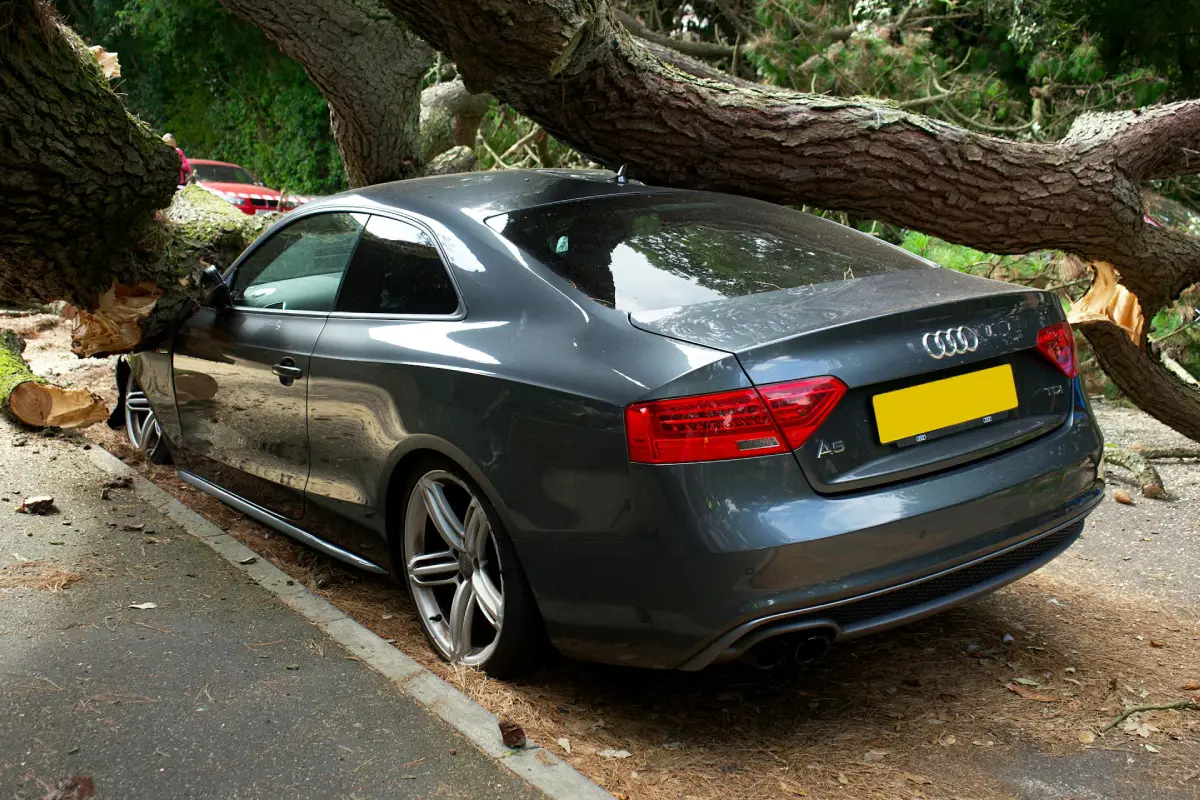
Buying a car is an investment, and you want to ensure your new purchase is protected with the right car insurance coverage. Within the realm of car insurance, you have the option to add gap insurance to your policy.
What is gap insurance? Let’s explore the basics of gap insurance, what it does and doesn’t cover, and how to determine if it’s a smart move for your situation.
Understanding Gap Insurance Basics
Gap insurance, short for “Guaranteed Asset Protection,” is a type of optional car insurance coverage that’s there for you if your car is stolen or totaled.
Unlike standard car insurance, which typically covers the current market value of your car, gap insurance helps cover the “gap” between what you owe on a loan or lease and the vehicle’s depreciated value in case of a total loss.
Cars lose value quickly, especially within the first few years, and this can leave you “upside down” on a car loan — meaning you owe more than your car is worth. With gap insurance, you get peace of mind and a financial cushion during an already stressful time.
Coverage for Vehicle Depreciation
One of the main reasons drivers choose gap insurance is to account for vehicle depreciation. Cars lose value as soon as they leave the lot, with depreciation rates varying based on the make, model, and mileage of the vehicle.
According to Kelley Blue Book, a new car can depreciate as much as 20% in its first year.
For example, let’s say you bought a car for $35,000, but after a year, it’s worth only $25,000, even though you still owe $30,000 on the loan. If your car is totaled in an accident or stolen, your regular insurance would likely cover the current market value — $25,000.
Without gap insurance, you’d be on the hook for the extra $5,000 to fully pay off your loan. Gap insurance steps in to cover that remaining $5,000, so you’re not left paying for a car you can no longer drive.
Protection Against Loan and Lease Balances
Gap insurance is especially helpful for covering any remaining loan or lease balance that regular car insurance won’t pay if your car is stolen or totaled in a serious accident.
For leased vehicles, gap insurance is often recommended and sometimes required since leases are structured differently than standard car loans. Some leases include gap coverage automatically, but others may require you to buy it separately.
Since leasing companies typically require higher insurance coverage to protect their investment, gap insurance can save you from paying off remaining lease payments if the car is a total loss.
For car loans, gap insurance is generally optional, although some lenders may require it in specific cases. It’s most useful for drivers with long loan terms (60 months or more) or who made a small down payment (20% or less).
In these situations, the loan balance often declines more slowly than the car’s value, leaving you at risk of owing more than the car’s worth in the early years.
What Gap Insurance Doesn’t Cover
Gap insurance offers valuable protection, but there are some things that it generally doesn’t cover:
- Standard wear and tear: Gap insurance doesn’t cover mechanical issues, damage from regular wear and tear, or cosmetic fixes. It only applies if the car is declared a total loss or stolen.
- Down payments and loan penalties: Gap insurance doesn’t account for missed payments, late fees, or loan penalties. It only covers the remaining balance up to the car’s depreciated value at the time of the total loss.
- Replacement vehicles: If you’re hoping for gap insurance to help you buy a new car, it only covers the remaining loan or lease balance. Any additional costs for replacing the car with a new one are generally your responsibility.
- Bodily injury and property damage: Gap insurance doesn’t cover bodily injuries or property damage in the event of an accident. The liability coverage on a car insurance policy helps cover these damages.
Determining If You Need Gap Insurance
You might wonder: Do I need gap insurance? Ultimately, it depends on your specific financial situation and how you financed your vehicle. Here are some signs that gap insurance might be a smart move:
- Low down payment: If you made a down payment of 20% or less, there’s a higher chance your loan balance could exceed the car’s value, especially in the first couple of years. Gap insurance would cover this difference if you faced a total loss.
- Long loan term: Financing your car for 60 months (5 years) or more means slower equity buildup, which increases the likelihood of having a “gap” between your car’s value and the amount owed.
- New or rapidly depreciating vehicle: New cars lose value quickly, often by 20% in the first year alone. Some car models depreciate faster than others, so gap insurance can be extra protection for new car buyers.
- Leased vehicles: Gap insurance is often required for leased cars to protect against the difference between what you owe and the car’s current value.
Gap insurance can be a valuable addition to your car insurance policy, especially if you’re concerned about rapid depreciation or owe more than your car’s current value. While it’s an extra cost, gap insurance could save you thousands if your car is totaled or stolen.
If you’re shopping for a new policy, compare options to find affordable, solid coverage. Many providers offer packages with cheap car insurance rates that still provide strong protection. With the right mix of regular coverage and gap insurance, you can drive confidently, knowing you’re fully covered if the unexpected happens.






